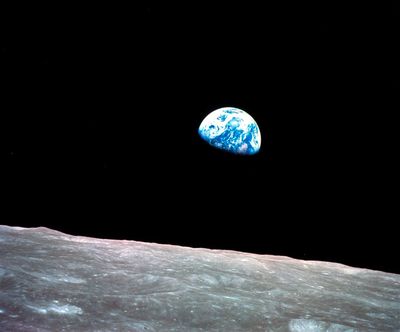Apollo 8 astronaut William Anders killed in WA plane crash

SEATTLE – Retired Maj. Gen. William Anders, the former Apollo 8 astronaut who took the iconic “Earthrise” photo showing the planet from space in 1968, was killed after a plane he was piloting alone Friday morning crashed off the coast of Jones Island, according to his son Greg Anders. William Anders was 90.
On Dec. 24, 1968, Anders and fellow astronauts Frank Borman and Jim Lovell became the first humans to orbit the moon.
“The family is devastated,” Greg Anders said. “He was a great pilot and we will miss him.”
The plane was flying north to south when it went down near the north end of Jones Island and sank, according to San Juan County Sheriff Eric Peter. The National Transportation Safety Board said Friday afternoon the plane had been located.
The Federal Aviation Administration and NTSB are investigating the crash. The NTSB said Friday afternoon the crash occurred “under unknown circumstances.”
Once the aircraft is recovered, the NTSB will examine it. As part of its investigation, the board will also look at flight track data, aircraft maintenance records, air traffic control communications, witness statements and information about the pilot.
The NTSB expects to release a preliminary report in 30 days. The final report, which will include the probable cause of the crash, could take one to two years.
“Earthrise,” Anders’ famous photograph taken during the Apollo 8 mission, was the first color image of Earth from space. It is one of the most important photos in modern history for the way it changed how humans viewed the planet. The photo is credited with sparking the global environmental movement for showing how delicate and isolated Earth appeared from space.
Anders and his wife, Valerie, moved to Orcas Island in 1993, according to the Heritage Flight Museum, which the couple started around the P-51 Val-Halla in 1996. The museum is now located at the Skagit Regional Airport in Burlington, Skagit County. The couple has six children and 13 grandchildren, according to the museum website.
Anders, Borman and Lovell were initially assigned to the Apollo 9 mission, a medium Earth orbit mission, according to the site. Development issues with the lunar module, and the pressure of the Space Race, led to the Apollo 8 mission being retasked to a lunar orbit mission without a lunar module and the original crews for Apollo 8 and 9 being switched, the site says.
William Anders said in an 1997 NASA oral history interview that he didn’t think the Apollo 8 mission was risk-free but there were important national, patriotic and exploration reasons for going ahead. He estimated there was about one in three chance that the crew wouldn’t make it back and the same chance the mission would be a success and the same chance that the mission wouldn’t start to begin with.
He said he suspected Christopher Columbus sailed with worse odds.
He recounted how Earth looked fragile and seemingly physically insignificant, yet was home.
“We’d been going backward and upside down, didn’t really see the Earth or the Sun, and when we rolled around and came around and saw the first Earthrise,” he said. “That certainly was, by far, the most impressive thing. To see this very delicate, colorful orb which to me looked like a Christmas tree ornament coming up over this very stark, ugly lunar landscape really contrasted.”
“I figured there were three possibilities, about equally weighted,” Anders told The Seattle Times in 2012. “One, we could go and have a successful mission – one-third chance – which is what happened. Or, we could go, survive and not have a successful mission – that’s Apollo 13. Or, we could go and we wouldn’t come back; splat somewhere.
“Pretty good odds.”